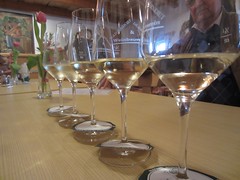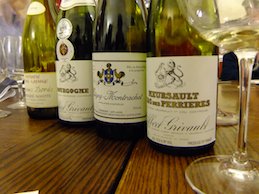I learned to taste wine through the medium of blind tasting. Contrary to popular perception, blind tasting does not involve fumbling around a table laden with wine glasses with your sight impeded by blindfolds. Rather, it simply means the identification of wine is unknown before tasting and assessing the wine. Without knowledge of the wine’s origin, prestige or price you can assess a wine objectively and without the prejudice of knowing the label. It is the method of tasting employed by wine professionals at most wine competitions and is an important component of Master of Wine and sommelier examinations.

Famously, a blind tasting organised by Steven Spurrier in 1976 – the Judgement of Paris – shattered the perception of France as the supreme producer of wine. Top whites (Chardonnay) and reds (Cabernet Sauvignon dominated blends as found in Bordeaux) from both California and France were submitted to a blind tasting in Paris. Eleven judges, nine of whom were French, assessed the wines blind for their quality with the surprising result that California came out on top in a number of categories. The tasting has proved controversial for many; nevertheless, it served to highlight the importance of objectivity when tasting wine and not to pay undue attention to the label!
For me, tasting a wine blind allows you to focus exclusively on what your own senses tell you. You can concentrate on what you see in the glass, the aromas you can smell, what the wine tastes like, whether those flavours linger and whether the wine feels balanced to you. Most importantly of all, you can assess whether you actually like this wine, rather than thinking whether you should like the wine! While blind tasting may seem to be quite an intellectual exercise, I feel it actually removes the snobbery often associated with wine by forcing you to evaluate a wine based entirely on what is in the glass. I have discovered many excellent value wines in this way.
Those interested in food in any small way should surely see the appeal of the hugely varied world of wine. We can get so much enjoyment out of the flavours and aromas of food, from the most technical, complex haute cuisine, through to a sun-ripened peach from your grandparents’ garden. Wine, arguably humanity’s most complex and mystical beverage, is no different.

Over coming posts, I will outline my approach to tasting and how to get the most out of your wine. In the meantime, however, the most important thing to keep in mind is simply to engage your senses – open your eyes, your nostrils, your taste buds to what you see, smell and taste. Pay attention to the beverage in front of you, as much as you might to your meal. Start to think about what you drink!
_________________
We are excited to introduce James Flewellen, our new wine columnist. James is a biophysicist at the University of Oxford. Originally from New Zealand, the huge range of wine James discovered in Europe spurred his interest in all things vinous. He became involved in the University’s Blind Wine Tasting Society and has recently completed a two-year term as its President. During this time he represented the University in a number of domestic and international wine tasting competitions, winning several awards. He is currently completing the WSET Diploma in Wine and Spirits. James has a passion for wine communication and education and runs the Oxford Wine Blog and the Oxford Wine Academy.
|
|







 by
by 















0 Comments